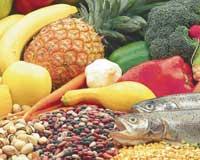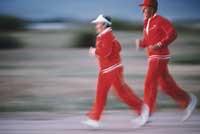Diet to fight diabetes
What is glucose?

Glucose is a simple monosaccharide. As a result of heat or digestion, starch and sucrose are free in hydrolysis, a process that occurs in the intestine and in which glucose passes to the blood. Glucose is the food of the cells of the whole body, but especially of the cells of the brain, which are their only food.
The insulin hormone that is produced in the area is essential for blood glucose to pass to the cells of the tissues. If there is more glucose than is necessary in blood, that is, in case of hyperglycemia, insulin is responsible for storing it in the form of glycogen in the liver and muscles. However, in type 2 diabetes, even if there are all the elements necessary for the proper performance of work, glucose cannot pass from blood to cells. As a result, the cells do not get the necessary nutrients and the diabetic feels hungry. In these cases, it is enough to lose the right weight for blood glucose levels to recover.
Symptoms of Diabetes
Type 2 diabetes is usually detected with a simple blood test, since the blood glucose index is high. However, there are a number of symptoms that help make the decision to perform a blood test, such as sudden loss of weight, thirst, hunger, ketosis, and presence of glucose in the urine. Once known, the adoption of measures is essential to avoid hypoglycemia or hyperglycemia crisis and, fundamentally, cardiac, renal and visual problems.
The World Health Organization is quite concerned about the increase in diabetes. The organization estimates that in 2005 there will be 300 million diabetics in the world. It seems that this increase is directly influenced by eating habits and by the scarce physical exercise of developed countries. However, according to recent studies, sucrose (white sugar) is a responsibility for simple carbohydrate. In addition, diabetes has a genetic component and if any of our predecessors have diabetes problems, we are also more likely to be.
People with diabetes problems should have a special diet to control blood glucose levels, but at the same time they should pay special attention to blood fat and blood pressure levels. In fact, at the last conference on diabetes, experts highlighted the importance of controlling fats. Consequently, a strict diet should be followed to avoid problems of glucose, cholesterol, and triglycerides.

You have to be very careful with the carbohydrates that are easily absorbed, such as white sugar, honey, sweets, nougats, mazapanes, pastries, cakes, ketchup… since these foods quickly raise the blood glucose levels after eating and the large sudden increases are dangerous. To measure this data, a new concept is used, the glycemic index. The glycemic index indicates the increase in blood glucose that produces a certain meal compared to that of bread.
The above mentioned foods have a high glycemic index, so they should be taken in moderation. For their part, legumes and whole grains have a low glycemic index, as they contain complex carbohydrates and other ingredients such as fiber. Fiber acts in two ways. On the one hand, it hinders the intestinal absorption of glucose and fat, so the glucose is absorbed slowly, the blood glucose rises slowly and the glucose is guaranteed for a few hours. On the other hand, it carries some glucose out of the body with it. In addition to fiber, legumes and whole grains, there is also fruit and vegetables.
Taking into account all these considerations, the diabetic diet should have the following characteristics:
- Daily meals will be distributed in five meals respecting, to the extent possible, schedules and quantities.
- Do not eat anything outside meals, much less food with sugar or honey. When the belly is empty, sucrose causes a sudden increase in insulin, while if taken along with other foods, the rise is much slower.
- Never drink drinks containing alcohol or sugar.
- Consume little food with saturated fats.
- Eat slowly, chew well.
- Do not finish the sweet meals, as before you will have breakfast.
Finally, it is helpful for diabetics to do a little daily exercise, for example, walking half an hour a day improves blood glucose levels considerably.
Fructose, along with glucose and galactose, is one of the three simple monosaccharides that are known, but enjoys more than others. Therefore, since the blood glucose level increases more slowly, it is the main ingredient of special foods that are sold for diabetics, which replace the traditional sucrose. There are many products that contain fructose, such as cookies, chocolates, nougats, mazapanes, cakes... and advertising says that these foods can be eaten whatever you want.

Apart from these special foods, fruits and vegetables have their own fructose. The average amount of fructose present in the fruit ranges between 1 and 7%, so diabetics can take a maximum of two pieces of fruit a day, except the grape, which can never be taken. For example, honey is 40% fructose to be a reference. However, the amount of fructose varies depending on the maturity of the fruit. As the fruit is maturing, starch is hydrolyzed. Consequently, fructose is more free and sweeter.
Fructose is absorbed in the intestine without being transformed. Then, in the liver, it is transformed into glucose so that tissue cells can be used, since the body has no means to use fructose.
Buletina
Bidali zure helbide elektronikoa eta jaso asteroko buletina zure sarrera-ontzian











